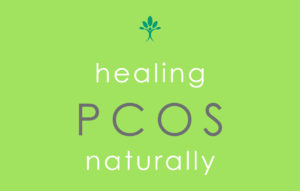As many as 1.5 million American children and adults are believed to have some form of Autism, the developmental disability that results from a neurological disorder affecting social interaction and communication skill. According to the CDC, Autism affects 1 in 250 births and that number is climbing everyday. Autism usually appears during the first three years of life and affects boys four times more often than girls. It is the most common of the five disorders that come under the umbrella of Pervasive Developmental Disorders.
There has been much controversy over the cause of Autism, however researchers do accept that it is abnormalities in brain structure or function that causes such behaviors. Researches are investigating a number of theories, including heredity, genetics and medical problems to locate a trigger that causes Autism to develop.
The highly controversial theory linking Autism to the mercury in thimerosal, a preservative used in many childhood vaccinations, is still on the forefront. Some argue that certain children do not have the detoxification capacity as others and therefore cannot expel the toxic metal and brain damage results. A 2004 study by the International Journal of Toxicology determined that there were significantly increased odds ratios for Autism, mental retardation, speech disorder, personality disorders and thinking abnormality adverse events reported to the VAERS following thimerosal-containing DTaP vaccines. This study provided additional epidemiological evidence supporting previous epidemiological, clinical and experimental evidence that administration of thimerosal-containing vaccines resulted in a significant number of children developing neurodevelopmental disorders.
According to the Autism Society of America, autistic behaviors include: insists on sameness; resist change, has difficulty expressing needs, repeats words or phrases, laughs, cries, shows distress for no apparent reason, prefers to be alone, has tantrums, difficulty mixing with others, does not want to be cuddled, engages in little or no eye contact, unresponsive to normal teaching methods, sustains odd play, spins objects, inappropriate attachment to objects, over or under-sensitive to pain, no fears, unresponsive to verbal cues; acts as if deaf.
Because there are no medical tests for diagnosing Autism, a diagnosis is often made based on observation. Several screening instruments have been developed including the Childhood Autism Rating Scale (CARS), the Checklist for Autism in Toddlers (CHAT), the Autism Screening Questionnaire, and the Screening Test for Autism in Two-Year-Olds.
Treatment for Autism has also been a controversial subject. Because no direct cause has been found, there are many directions treatment can go. Dietary changes are simple yet important steps that need to be taken. Some research has implicated the incomplete breakdown of peptides from foods that contain gluten, found in wheat, oats and rye, and casein, found in dairy products, which can lead to disruption in the biochemical and neuroregulatory processes in the brain. These substances also contain opioid-like molecules that may lead to sedation. Elimination of wheat, gluten, and casein is an important step to overcoming Autism. Yeast may also be an issue in those displaying autistic behaviors and may contribute to the behavioral and medical problems including, confusion, hyperactivity, stomach problems and fatigue. Another issue is detoxification. Studies have shown that autistic patients may not have the ability to detoxify toxic material, such as heavy metals from the system. Liver support along with chelation, the process of removing heavy metals from the body, can lead to dramatic results.
Although not much is known about Autism and neurodevelopmental disorders, there are many treatment options available that have shown great clinical success.
References:
1. Geier D, Geier MR, Neurodevelopmental disorders following thimerosal-containing childhood immunizations: a follow-up analysis. Int J Toxicol. 2004 Nov-Dec;23(6):369-76.
2. Greenspan SI, Brazelton TB, Cordero J, Solomon R, Bauman ML, Robinson R, Shanker S, Beinbauer C, Guidelines for early identification, screening and clinical management of children with autism spectrum disorders. Pediatrics 2008 Apr;121(4):828-30.
3. Offit PA, Vaccines and Autism revisited—the Hannah Poling case. N Engl J Med. 2008 May 15;358(20):2089-91.
4. Ray-Mihm R. Autism: part II. Genetics, diagnosis, and treatment. J Contin Educ Nurs. 2008 Mar;39(3):102 – 3.
5. Schaefer GB, Mendelsohn NJ, Genetics evaluation for the etiologic diagnosis of Autism spectrum disorders. Genet Med. 2008 Jan;10(1):4-12.


Comments are closed.